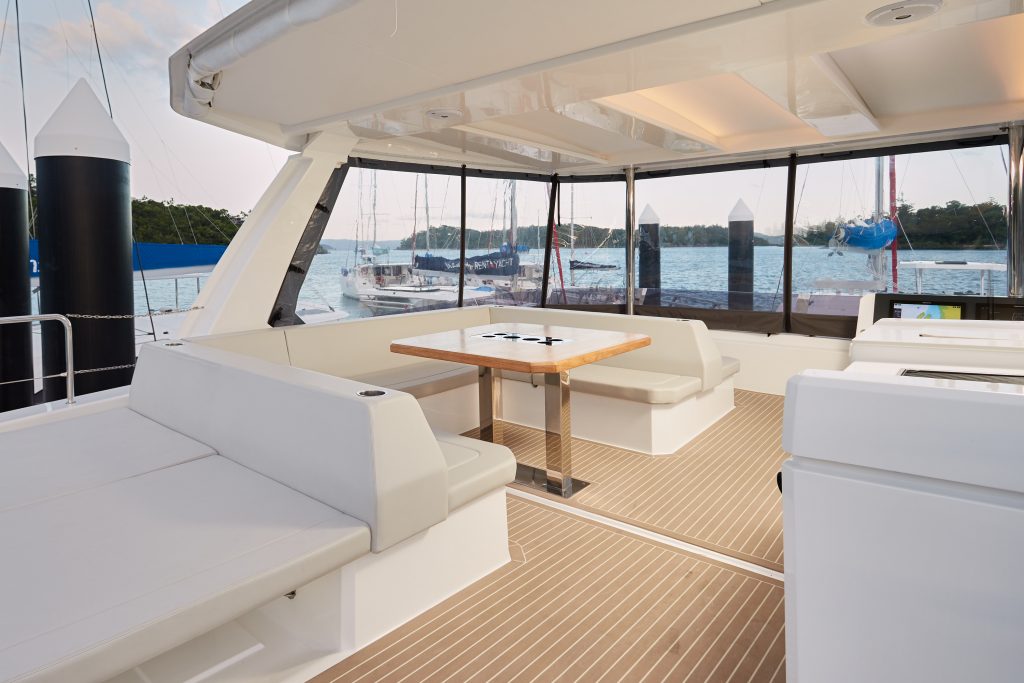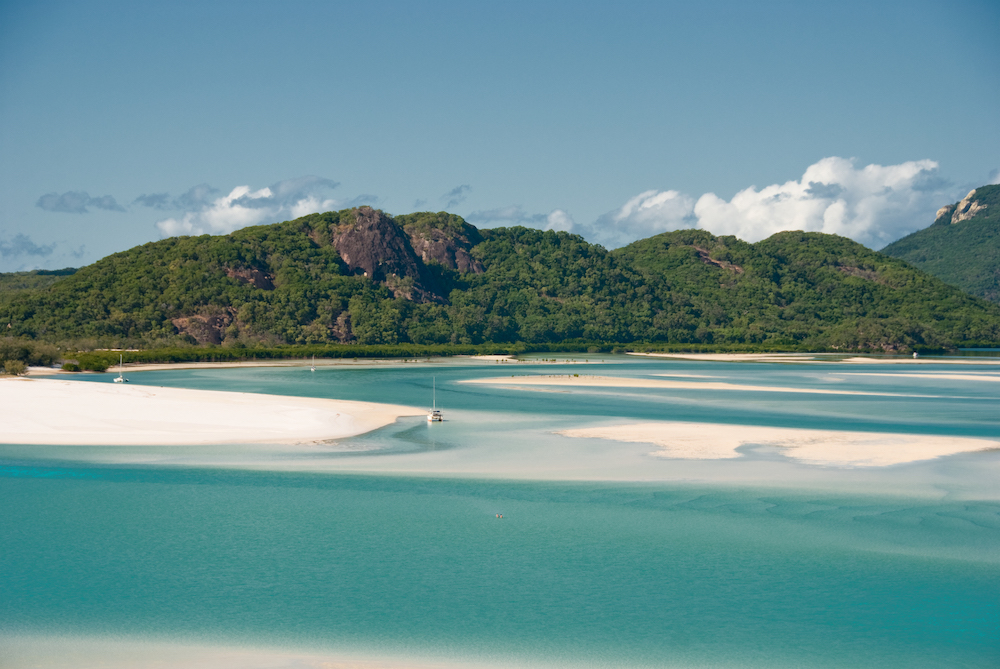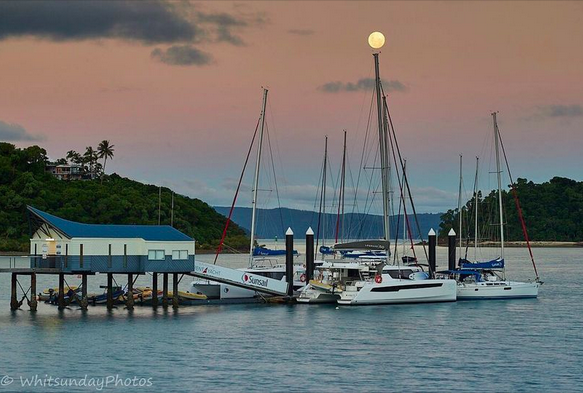As a trusted bareboat charter company, we do our best to address our customers’ concerns daily. We want our guests to feel safe and supported while enabling them to enjoy a fun-filled boating holiday full of memories that will last a lifetime.
In this post, we address the main concerns our guests express.

7 Common Concerns about a sailing holiday in the Whitsundays
Choosing the right boat for a sailing holiday
After deciding when to travel, choosing the right boat is one of the most important decisions you will make for your sailing holiday.
Consider these points when deciding on a bareboat:
- How many cabins and bathrooms do you want
- How much living space would you like
- Budget
- If you want to prioritise sailing performance over space. In other words, a monohull or a catamaran
Our fleet consists of powercats, sailing cats and monohull yachts with a range of sleeping capacities between 6 – 10.

Navigation and Tides
Navigation throughout the Whitsundays islands is relatively simple. Only basic coastal navigation skills are required, and most of the navigation can be done with line of sight. In your briefing, you will be taught how to read a map and determine travel distance and the ocean’s depths.
The Whitsundays are considered a safe place for sailing. However, we do recommend guests keep a couple of key tricky spots in mind:
- The area surrounding Hayman Island – Langford Reef & Bali Hai (Black Island)
- Unsafe Passage” on the northern end of Daydream Island
- French Shoal situated approximately 1 mile east of and running parallel to Whitehaven Beach
The tides in the Whitsundays can vary by up to four meters, making choosing where to anchor challenging. Again, you will learn about tides in your briefing. Still, if they are a new concept for you, we recommend looking at some information videos such as this one:
Itinerary Planning
With so many amazing places to explore around the Islands, you’ll be spoilt for location choice. The wind conditions determine where you go, so it’s wise not to get too attached to certain places. Still, it’s also worth knowing some of the highlights and having an itinerary wish list.
Check out this handy interactive map where you can check out some anchorages within our cruising area.
For the most popular bucket list destinations, consider:
- Whitehaven Beach, Whitsunday Island
- Tongue Bay & Hike to the Hill Inlet Lookout, Whitsunday Island
- Nara Inlet to see the Ngaro Artwork
- Chalkies Beach for the same amazing sand as Whitehaven
- Langford Sand Spit, day stop only
To explore areas off the beaten path, consider:
- Plantation Bay, Langford Island
- Maureen’s Cove, Hook Island
- Turtle Bay, Whitsunday Island
- Neck Bay, Shaw Island
- Esk Island
We’ve created a 5, 7 and 10-day sample itinerary you can download.

Safety while on the water
Whitsunday Rent a Yacht has an experienced and dedicated maintenance team who ensures every boat is safe before it’s hired. Everything is meticulously checked, even a diver goes over our vessels after each charter to ensure they are undamaged.
Whitsunday Rent a Yacht provides safety briefings before guests embark on a trip, ensuring all passengers know the potential hazards and the safety equipment onboard. We have protocols our guests are asked to follow while out on the water, and if an emergency should happen, we are the closest bareboat charter base to the Islands, meaning a help boat is not far away.
The Whitsunday Islands are considered an extremely safe sailing ground because the outer Great Barrier Reef protects them from large swells. Anchorages are not far from each other. Island resorts are scattered throughout, and many other boating enthusiasts share the waters, meaning a neighbouring boat could assist if you need immediate help.
Learn more about what goes on behind the scenes to ensure you have a safe charter.
 Photo credit Whitsunday Photos
Photo credit Whitsunday Photos
Finding anchorages and moorings
Anchoring and mooring are essential aspects of sailing through the Whitsunday Islands. These skills are covered extensively in your briefing, where you will be shown how to anchor and pick up a mooring.
You will have a copy of 100 magic miles onboard your boat with details maps showing where anchoring is allowed and the placement of moorings. The book gives instructions on what to watch out for and tides or currents to keep in mind when choosing to anchor.
Moorings are provided by parks and wildlife to ensure that anchors are not dropped, damaging the reef. Anchoring is allowed in areas not protected by reef markers.
There is a knack to anchoring and mooring, so we recommend brushing up on your knowledge before a charter.
Dealing with unexpected weather conditions
The Whitsundays have a wet and dry season, with the most popular times to sail between July and November. Generally, the weather in the Whitsundays is warm year-round; winter sits close to 23°C, which isn’t cold at all. Summer can get wet, hot and humid. Still, the showers generally pass quickly, adding a nice refreshing element to the season.
The weather in the Whitsundays is a tropical climate, so the weather can be unpredictable at times. When planning your sailing holiday, it’s wise to have a contingency plan if the weather throws a curve ball.
We suggest our guests consider berthing their boats at Hamilton Island, particularly if the weather is unfavourable. Hamilton Island provides loads of wet weather activities, restaurants and other resort attractions to enjoy no matter the conditions.
Learn more about what to do if the weather isn’t perfect.

Sharks and Marine Life
The Whitsunday Islands are home to a diverse range of marine life, including turtles, dolphins, whales, jellyfish, sharks, and various coral reef creatures. It is important to respect the marine environment and to look after your safety in relation to it.
Stinger season is when dangerous jellyfish are present in warmer waters. During stinger season, wearing a stinger suit is incredibly important. However, we suggest that stinger suits are worn year-round for peace of mind and sun protection.
We encourage all of our guests to be Shark Smart and learn the swimming safety guidelines for our area. We don’t want the presence of sharks to scare people. Shark attacks are very rare, but awareness of how to be safe is still essential.
Cid Harbour, Nara Inlet are no swim zones. It’s also wise to have a general rule that if the water is deep and murky, don’t swim in it, particularly at dusk. We invite you to learn more about sharks in the Whitsundays.
While it is natural and reasonable to have some concerns about taking a large boat out for several days without a crew, a sailing holiday in the Whitsundays is an experience you’ll love. It’s like no other holiday.
With the proper support, training and an adventurous mindset, you will have a fantastic trip and, like many of our guests, return year after year.





